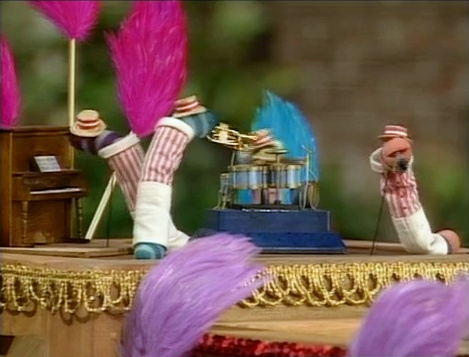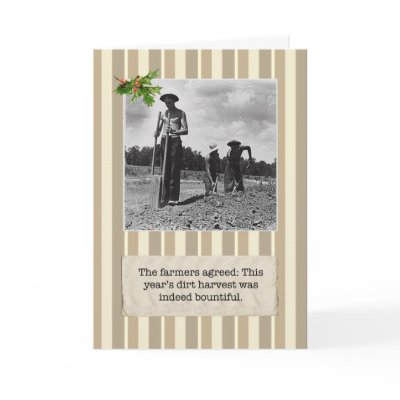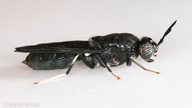
It’s been a year, or a bit more, since that first bucket. Am I glad I decided to try bokashi? Absolutely. Shall I continue into the second year? You bet, and quite probably beyond. Am I satisfied it’s the answer to my particular needs?
Well...yes and no.
I love bokashi for its ease of use, for its capacity to handle things I never thought of as compostable before, for its versatility, and most of all for its speed to completion—without recourse to machines or manual chopping, I can have usable planting media, composts, and fertilizers in less than a month, or invest a bit more time though no more effort to create incredibly lush microbe-rich vermicompost and compost-amended potting mixes.
But it’s still not perfect. For me, I mean. Bokashi can’t be used straight out of the bucket, it has to be composted or otherwise finished first. And have I mentioned that I’m lazy?
The apartment now has a full-sized compost bin—installed very shortly after I started this project, in fact—and while that approximately 30 gallon unit is not sufficient to handle all the yard and kitchen waste the tenants generate, I probably wouldn’t have bothered with bokashi bucket fermentation had it been around before. For all that bokashi is far preferable (more convienient, more controllable, requiring far less carbon-rich matter or other resources, and processing many more items than traditional aerobic compost), the apartment bin has one unanswerable advantage: it’s free.
The compost bin is outdoors and out of the way, and can be neglected without concern for odor, also pluses to my point of view. And it’s somehow less personal than bokashi. Easier to share.
Okay, so I’m strange, but I’ve discovered that I’m not really comfortable with the idea of my neighbors knowing, in intimate detail, just what it is I discard. Trash bags are sealed, so fairly private even when sharing wheelie bins. But the contents of a bokashi bucket are largely unchanged in appearance after fermentation—so anyone who cares to look down, when adding their own ferment to a communal post-bucket container, can see exactly what I’ve fermented. (To the extent it isn’t covered or diced into anonymity, at least.) Creeps me out. Nor do I want to know what the neighbors dispose of. Somehow, the compost bin’s more limited contents seem less...telling.
(Don’t ask about the recycling wheelie. I try not to think about it, or to look when adding my own recyclables. It’s none of my business, thanks just the same.)
So even if I could figure out how to keep Black Soldier Flies out of a converted wheelie bin, I wouldn’t be all that comfortable with an apartment Great Big Bokashi Bin [which is in the archives somewhere]. Maybe something in a compactor? Hmm...
No, sorry, this post was about last year, not future projects. So where was I? Oh, yes: the ROI of bokashi.Over this past year I generated more compost and refreshed more planter mixes than I’d really thought possible, not to mention sowed and reaped a great deal of produce for very little money and not all that much work. Far more than I managed when I last had an in-ground garden and associated traditional aerobic compost bin, even given the disadvantages of growing produce in planters and our drought.
Not to mention EM’s other uses, in the garden and beyond. So, yes, lots of benefits, and well worth the minimal expense (a dollar a week or less, if I’m considering only bokashi and not the varied and sundry tangential experiments) and minimal effort of draining the bucket every couple of days, emptying a bucket every couple of weeks, mixing a quart of AEM now and then, and making EM bokashi bran (or “bran”).
But there’s that one great big issue still to resolve: What happens after the bucket. I spent a fair amount of time, this past year, in reading about, thinking about, and testing other people’s solutions and my own adjustments to same. And I found a few solutions that do work for me—and, presumably, for others in similar situations. That is, for those of us so land-deprived we haven’t even a hole in the ground. But for all I have options, I’m still looking for The One.
My perfect post-bucket solution would be 1) Indoors. 2) In the same bokashi bucket. 3) Fast. 4) As nearly hands-free as can be. 5) Free, or at least
very cheap.
Vermicomposting can be done indoors, but the standard model isn’t feasible for me, given my small living space and the way I feel about wriggly things; I’ll probably try another escape-proof unit this winter, maybe an indoor planter tower or something, but for now, the worms are outdoor-only. Planter finishing can be done indoors (though I’d advise a garage instead of a kitchen, especially if you’re cutting your curing time short) but it takes a fair bit of space, effort, and other resources. Next?
I’ve been playing with bokashi fermentation in disposable containers [upcoming post, and I’ll try to get it up this week; with fermentation and composting in the same reusable bucket; with adding composting worms to a bokashi bucket after a pre-composting stage; etc. But while I’ve had some successes, I’m not altogether thrilled with any of these.
Speed, bokashi has down. Add cured bokashi to what trad-composters call a brown material and stand back! A bucket of dried leaves plus one of bokashi becomes compost very quickly, faster with a bit of turning, but if you prefer the hands-off model, mixing in some dirt and adding a soil blanket—using good garden soil—is almost as fast as the recommended burial that isn’t an option for the groundless apartment gardener that I am. Outdoors, at least. That good garden soil has too many wriggly or crawling things for me to want it inside, you see, as do swept-up leaves.
If I had the space and the funds, a compost tumbler/turner would be my next garden purchase. Imagine how quickly, how completely, that mix would convert! But that’s hardly an
indoor solution. So I’m still thinking, still reading, still testing.
At least it keeps me from being bored. And the garden’s growing.
DSF


























